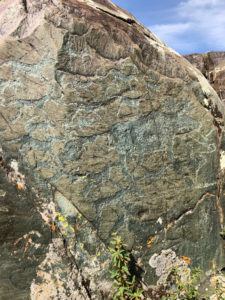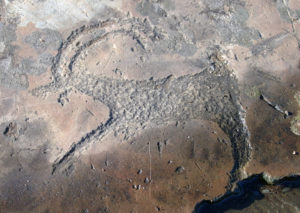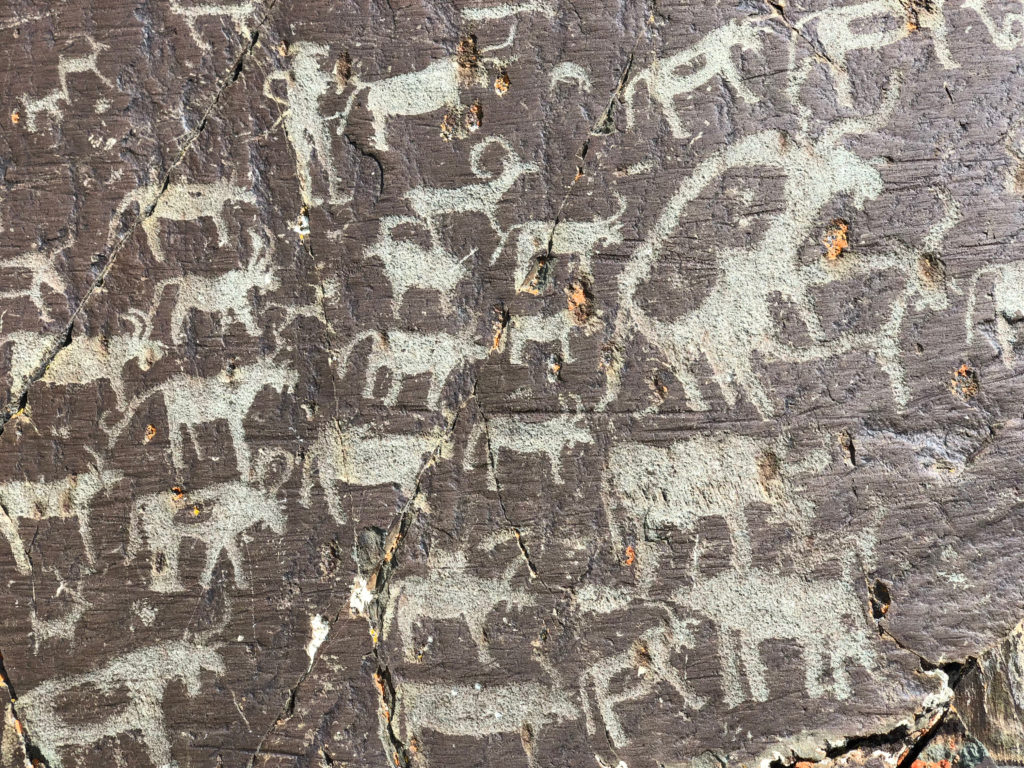Altai Petroglyph Complexes in Mongolia and Russia [2020]

Greater Altai is home to spectacular rock art. The art depicts 12,000 years of cultural development and is an invaluable record of the culture and traditions of prehistoric and early historic communities occupying the region. Because the humans in this area were nomads, with no permanent settlements, evidence of their presence is often difficult to decipher. Altai petroglyph complexes are one surviving source of information. They can be found in many places, sometimes scattered and other times in large concentrations.
Conservation issues
Petroglyph sites are fragile and easily damaged by out-dated research practices, thoughtless tourists, and theft by people seeking profit or an illegal souvenir. Preserving them is difficult in their original and often remote locations. Protected Areas have limited resources and generally are unable to monitor these sites, relying on the goodwill of human visitors. Indigenous communities are usually well aware of their cultural heritage sites, using maps and databases. Where the risk is highest thanks to easy access or frequent traffic, some communities develop their own protection measures, including fencing, strategic patrols, and guide services.
Further reading
If you are interested in learning more about Greater Altai rock art, we highly recommend reading any of Esther Jacobson-Tepfer’s publications, especially The Life of Two Valleys in the Bronze Age: Rock Art in the Altai Mountains of Mongolia. Jacobson-Tepfer presents other ideas to consider: the artist’s choice of location in the environment, seasons, weathering, and even lichen and changes in rock coloring in the art. She discusses rock art’s role in Altai tradition and culture, in addition to providing many pictures of the rock art of this early and mid Holocene period.
Notable Altai petroglyph sites
Three sites in northwestern Mongolia – the “Petroglyphic Complexes of the Mongolian Altai” – were recognized as a UNESCO World Heritage Site in 2011. These sites, all located in the Mongolian Altai Bayan-Ülgii Aimag, contain some of the finest specimens of rock art worldwide and least damaged petroglyphic concentrations in Asia. They are described below.

Some of the images found in the Tsagaan Salaa/Baga Oigor complex are believed to have been created in the late Pleistocene era, as evidenced by images of mammoths. Other animal images depict wild cattle, horses, argali sheep, and bears. Bronze Age inhabitants in the region left their mark with paintings of hunting scenes, loaded caravans, and other images depicting aspects of human life in the region.
Upper Tsagaan Gol
This rock art complex located under the glaciers of Tavan Bogd represents one of the richest concentrations of prehistoric and early historic art within North Asia. It contains an extensive collection created in the Bronze Age and Turkic period, depicting hunts, herding, and riders carrying eagles or falcons, among other scenes.
Aral Tolgoi
This site is located at the western end of the great lake Khoton Nuur, represents the finest and largest open-air collection of Paleolithic rock art within North Asia. Featuring paintings of wild cattle, argali sheep, horses, and other animals, this site is the smallest, but no less important in terms of cultural heritage.
Kalbak Tash
Another concentration of petroglyphs is found in Altai Republic’s Ongudaysky Rayon. Here, there are over 3,000 drawings, engraved with both stone and metal tools, showing images related to humans, animals, the cosmos, and more fantastical images. The extensive collection of petroglyphs date to various historic periods, spanning the Neolithic to Ancient Turkic periods. Although local caretakers are vigilant, the site faces serious conservation challenges due to its popularity as a roadside tourist stop.

We welcome your feedback, questions, and ideas about Altai petroglyph complexes – reach out!
Learn more about Altai spiritual and cultural traditions and history.
